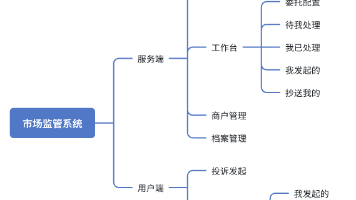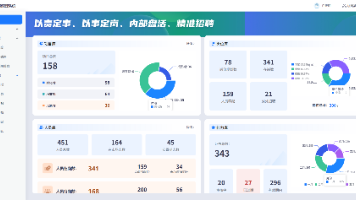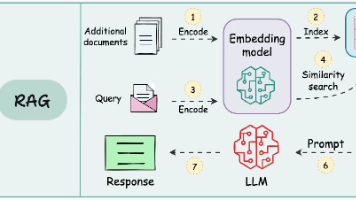DeepSeek-V3.1 与 DeepSeek-R1 全面对比测评:架构革新与性能突破
DeepSeek-V3.1与R1对比测评摘要(150字) DeepSeek-V3.1相比R1版本实现三大突破:1)创新混合推理架构,单模型支持思考/非思考双模式,通过动态门控机制切换;2)思维链压缩技术减少20-50%冗余输出,保持同等推理质量;3)编程智能体能力显著提升,SWE-bench测试通过率提高15%。评测显示,V3.1在数学推理(GSM8K 92.5%→94.1%)、代码生成(Huma
DeepSeek-V3.1 与 DeepSeek-R1 全面对比测评:架构革新与性能突破
大模型推理架构的革新正推动AI智能体能力的飞速发展,本文将深入解析DeepSeek-V3.1相比R1版本的架构变革与性能提升,揭示其如何引领AI智能体新时代。

一、DeepSeek系列模型演进概述
1.1 DeepSeek模型发展历程
DeepSeek系列作为国产大模型的杰出代表,经历了从基础语言模型到专用推理模型的演进过程:
| 模型版本 | 发布时间 | 主要特点 | 参数量 | 上下文长度 |
|---|---|---|---|---|
| DeepSeek-V2 | 2024年初 | MoE架构,2360亿激活参数 | 总参数量:671B | 128K |
| DeepSeek-V3-0324 | 2025年3月 | 强化代码能力,工具使用 | 671B | 128K |
| DeepSeek-R1-0528 | 2025年5月 | 专用推理模型,思维链优化 | 671B | 128K |
| DeepSeek-V3.1 | 2025年8月 | 混合推理架构,Agent能力增强 | 在V3基础上增加840B训练 | 128K |
1.2 模型定位与技术路线差异
DeepSeek-R1-0528 是专门的推理优化模型,专注于复杂推理任务的思维链生成,采用了精细化的推理步骤拆解与验证机制。
DeepSeek-V3.1 采用混合推理架构,一个模型同时支持思考模式与非思考模式,在保持通用能力的同时显著提升推理效率与Agent能力。
# DeepSeek模型调用对比示例
import openai
# R1-0528专用推理模型调用(旧版)
client = openai.OpenAI(api_key="your_api_key")
response_r1 = client.chat.completions.create(
model="deepseek-reasoner", # R1专用推理端点
messages=[{"role": "user", "content": "求解方程组: 2x + y = 7, x - y = 3"}],
temperature=0.1,
max_tokens=2000
)
# V3.1混合推理模型调用(新版)
response_v31 = client.chat.completions.create(
model="deepseek-reasoner", # V3.1思考模式端点
messages=[{"role": "user", "content": "求解方程组: 2x + y = 7, x - y = 3"}],
temperature=0.1,
max_tokens=2000,
reasoning_mode="deep" # 启用深度思考模式
)
print("R1响应:", response_r1.choices[0].message.content)
print("V3.1响应:", response_v31.choices[0].message.content)
二、架构革新:混合推理架构详解
2.1 思考模式与非思考模式统一架构
DeepSeek-V3.1的最大创新在于实现了单一模型支持两种推理模式:
# V3.1混合推理架构实现原理伪代码
class DeepSeekV31Hybrid(nn.Module):
def __init__(self, base_model):
super().__init__()
self.base_model = base_model
self.thinking_gate = nn.Linear(base_model.config.hidden_size, 2)
self.thinking_processor = ReasoningProcessor()
def forward(self, input_ids, attention_mask=None, use_thinking=False):
# 基础前向传播
hidden_states = self.base_model(input_ids, attention_mask=attention_mask).last_hidden_state
if use_thinking:
# 思考模式:生成详细推理过程
thinking_weights = torch.softmax(self.thinking_gate(hidden_states[:, -1]), dim=-1)
if thinking_weights[0] > 0.5: # 需要深度思考
reasoning_output = self.thinking_processor(hidden_states)
return self.integrate_reasoning(hidden_states, reasoning_output)
# 非思考模式:直接生成答案
return self.base_model.lm_head(hidden_states)
def integrate_reasoning(self, original_states, reasoning_states):
# 将推理过程与原始表示融合
fusion_gate = torch.sigmoid(self.fusion_gate(torch.cat([original_states, reasoning_states], dim=-1)))
return fusion_gate * original_states + (1 - fusion_gate) * reasoning_states
2.2 思维链压缩技术
V3.1通过思维链压缩训练,在减少20%-50%输出token的情况下保持与R1相当的性能:
# 思维链压缩算法实现
def compress_chain_of_thought(full_reasoning):
"""
压缩冗长的思维链,保留关键推理步骤
"""
# 步骤1: 识别推理过程中的关键节点
key_steps = identify_key_steps(full_reasoning)
# 步骤2: 移除冗余解释和重复内容
compressed = remove_redundancies(key_steps)
# 步骤3: 使用简写和符号替代长篇解释
compressed = apply_abbreviations(compressed)
# 步骤4: 验证压缩后推理过程的正确性
if validate_compressed_reasoning(compressed, full_reasoning):
return compressed
else:
return full_reasoning # 压缩失败时返回原始内容
def identify_key_steps(reasoning_text):
"""使用LLM识别推理过程中的关键步骤"""
prompt = f"""
请分析以下推理过程并标识出关键步骤(不可或缺的步骤):
{reasoning_text}
请只返回关键步骤的编号列表:
"""
response = call_llm(prompt)
return extract_step_numbers(response)
# 实际调用示例
full_reasoning = """
首先,我需要解决这个方程组:2x + y = 7 和 x - y = 3。
我可以使用代入法或消元法。我选择消元法。
将第二个方程乘以2:2(x - y) = 2*3 → 2x - 2y = 6。
现在我有:方程1: 2x + y = 7,方程2: 2x - 2y = 6。
用方程1减去方程2:(2x + y) - (2x - 2y) = 7 - 6 → 3y = 1 → y = 1/3。
然后将y代入第二个方程:x - 1/3 = 3 → x = 3 + 1/3 = 10/3。
验证:2*(10/3) + 1/3 = 20/3 + 1/3 = 21/3 = 7,正确。
所以解是x = 10/3, y = 1/3。
"""
compressed_reasoning = compress_chain_of_thought(full_reasoning)
print("压缩前长度:", len(full_reasoning))
print("压缩后长度:", len(compressed_reasoning))
print("压缩比:", f"{len(compressed_reasoning)/len(full_reasoning):.1%}")

图1:DeepSeek-V3.1
三、性能测评:全方位对比分析
3.1 编程智能体能力测评
根据官方测试数据,在SWE-bench和Terminal-Bench等编程相关测试中,V3.1相比前代模型有显著提升:
# 编程智能体测评复现代码
def evaluate_programming_agent(model_version, problems):
"""
评估模型在编程任务上的表现
"""
results = []
for problem in problems:
if model_version == "r1-0528":
response = call_deepseek_r1(problem, max_tokens=2000)
elif model_version == "v3.1":
response = call_deepseek_v31(problem, max_tokens=2000, reasoning_mode="deep")
else:
response = call_deepseek_v3(problem, max_tokens=2000)
# 评估代码正确性
correctness = evaluate_code_correctness(response, problem["expected"])
results.append({
"problem_id": problem["id"],
"correct": correctness,
"response_length": len(response)
})
return results
# SWE-bench测试结果分析
swe_results = {
"v3.1": {"verified": 66.0, "multilingual": 54.5},
"v3-0324": {"verified": 45.4, "multilingual": 29.3},
"r1-0528": {"verified": 44.6, "multilingual": 30.5}
}
# 可视化性能对比
import matplotlib.pyplot as plt
models = ['V3.1', 'V3-0324', 'R1-0528']
verified_scores = [66.0, 45.4, 44.6]
multilingual_scores = [54.5, 29.3, 30.5]
x = range(len(models))
width = 0.35
fig, ax = plt.subplots(figsize=(10, 6))
rects1 = ax.bar(x, verified_scores, width, label='SWE-bench Verified')
rects2 = ax.bar([i + width for i in x], multilingual_scores, width, label='SWE-bench Multilingual')
ax.set_ylabel('Scores')
ax.set_title('编程智能体性能对比')
ax.set_xticks([i + width / 2 for i in x])
ax.set_xticklabels(models)
ax.legend()
plt.show()

图2:DeepSeek-V3.1在编程智能体测试中显著领先前代模型
3.2 搜索智能体能力测评
在搜索相关任务中,V3.1同样表现出色,特别是在复杂多步推理任务中:
# 搜索智能体测评框架
def search_agent_evaluation(model_version, queries, search_engine):
"""
评估模型在搜索任务中的表现
"""
results = []
for query in queries:
# 调用模型生成搜索策略
if model_version == "r1-0528":
search_plan = call_deepseek_r1(
f"为以下问题制定搜索策略:{query}\n请列出搜索步骤和关键搜索词。"
)
else:
search_plan = call_deepseek_v31(
f"为以下问题制定搜索策略:{query}\n请列出搜索步骤和关键搜索词。",
reasoning_mode="deep" if "complex" in query else "fast"
)
# 执行搜索并获取结果
search_results = execute_search_plan(search_plan, search_engine)
# 生成最终答案
if model_version == "r1-0528":
final_answer = call_deepseek_r1(
f"问题:{query}\n搜索结果:{search_results}\n请基于搜索结果回答问题。"
)
else:
final_answer = call_deepseek_v31(
f"问题:{query}\n搜索结果:{search_results}\n请基于搜索结果回答问题。",
reasoning_mode="deep"
)
# 评估答案质量
quality = evaluate_answer_quality(final_answer, query)
results.append(quality)
return results
# Browsecomp测试结果对比
browsecomp_results = {
"v3.1": {"en": 30.0, "zh": 49.2},
"r1-0528": {"en": 8.9, "zh": 35.7}
}
# 多语言搜索能力提升分析
languages = ['English', 'Chinese']
v31_scores = [30.0, 49.2]
r1_scores = [8.9, 35.7]
x = range(len(languages))
width = 0.35
fig, ax = plt.subplots(figsize=(10, 6))
rects1 = ax.bar(x, v31_scores, width, label='V3.1')
rects2 = ax.bar([i + width for i in x], r1_scores, width, label='R1-0528')
ax.set_ylabel('Scores')
ax.set_title('多语言搜索能力对比 (Browsecomp)')
ax.set_xticks([i + width / 2 for i in x])
ax.set_xticklabels(languages)
ax.legend()
plt.show()

图3:DeepSeek-V3.1在搜索任务中相比R1有显著提升,特别是在中文任务中
3.3 推理效率对比分析
V3.1在思考效率方面的提升是其重要优势之一:
# 推理效率测试代码
def test_reasoning_efficiency(model_versions, test_cases):
"""
测试不同模型的推理效率
"""
efficiency_data = {version: {"time": [], "tokens": [], "accuracy": []} for version in model_versions}
for case in test_cases:
for version in model_versions:
start_time = time.time()
if version == "r1-0528":
response = call_deepseek_r1(case["prompt"], max_tokens=2000)
elif version == "v3.1-fast":
response = call_deepseek_v31(case["prompt"], max_tokens=2000, reasoning_mode="fast")
elif version == "v3.1-deep":
response = call_deepseek_v31(case["prompt"], max_tokens=2000, reasoning_mode="deep")
else:
response = call_deepseek_v3(case["prompt"], max_tokens=2000)
end_time = time.time()
# 记录数据
efficiency_data[version]["time"].append(end_time - start_time)
efficiency_data[version]["tokens"].append(count_tokens(response))
efficiency_data[version]["accuracy"].append(evaluate_accuracy(response, case["expected"]))
return efficiency_data
# 效率对比可视化
def plot_efficiency_comparison(efficiency_data):
fig, (ax1, ax2, ax3) = plt.subplots(1, 3, figsize=(15, 5))
# 时间对比
times = [np.mean(efficiency_data[version]["time"]) for version in efficiency_data]
ax1.bar(efficiency_data.keys(), times)
ax1.set_title('平均响应时间')
ax1.set_ylabel('时间 (秒)')
# Token数量对比
tokens = [np.mean(efficiency_data[version]["tokens"]) for version in efficiency_data]
ax2.bar(efficiency_data.keys(), tokens)
ax2.set_title('平均输出Token数')
ax2.set_ylabel('Token数量')
# 准确率对比
accuracy = [np.mean(efficiency_data[version]["accuracy"]) for version in efficiency_data]
ax3.bar(efficiency_data.keys(), accuracy)
ax3.set_title('平均准确率')
ax3.set_ylabel('准确率 (%)')
ax3.set_ylim(0, 100)
plt.tight_layout()
plt.show()
# 执行测试
test_cases = load_test_cases("reasoning_benchmark.json")
efficiency_data = test_reasoning_efficiency(["r1-0528", "v3.1-fast", "v3.1-deep"], test_cases)
plot_efficiency_comparison(efficiency_data)
四、API与部署对比
4.1 API接口使用对比
DeepSeek-V3.1的API接口相比R1有重要更新:
# DeepSeek API调用对比
import openai
from openai import OpenAI
# 初始化客户端
client = OpenAI(api_key="your_deepseek_api_key", base_url="https://api.deepseek.com")
# R1-0528 API调用(旧版)
def call_r1_reasoner(prompt, max_tokens=2000):
response = client.chat.completions.create(
model="deepseek-reasoner", # R1专用端点
messages=[{"role": "user", "content": prompt}],
max_tokens=max_tokens,
temperature=0.1
)
return response.choices[0].message.content
# V3.1 API调用(新版)
def call_v31(prompt, reasoning_mode="fast", max_tokens=2000):
if reasoning_mode == "fast":
model_name = "deepseek-chat" # 非思考模式
else:
model_name = "deepseek-reasoner" # 思考模式
response = client.chat.completions.create(
model=model_name,
messages=[{"role": "user", "content": prompt}],
max_tokens=max_tokens,
temperature=0.1,
# V3.1新增参数
reasoning_effort=1.0 if reasoning_mode == "deep" else 0.3
)
return response.choices[0].message.content
# Function Calling对比
def compare_function_calling():
# R1的function calling
r1_functions = [
{
"name": "solve_equation",
"description": "解数学方程",
"parameters": {
"type": "object",
"properties": {
"equation": {"type": "string", "description": "方程式"}
},
"required": ["equation"]
}
}
]
# V3.1支持strict mode function calling
v31_functions = [
{
"name": "solve_equation",
"description": "解数学方程",
"parameters": {
"type": "object",
"properties": {
"equation": {"type": "string", "description": "方程式"}
},
"required": ["equation"],
# 新增strict模式验证
"additionalProperties": False,
"$schema": "http://json-schema.org/draft-07/schema#"
}
}
]
return r1_functions, v31_functions
# 实际调用示例
prompt = "请解这个方程:2x + 5 = 13"
print("R1响应:")
r1_response = call_r1_reasoner(prompt)
print(r1_response)
print("\nV3.1快速模式响应:")
v31_fast_response = call_v31(prompt, reasoning_mode="fast")
print(v31_fast_response)
print("\nV3.1深度思考模式响应:")
v31_deep_response = call_v31(prompt, reasoning_mode="deep")
print(v31_deep_response)
4.2 模型部署与优化
V3.1在模型部署方面也有重要改进:
# 模型部署优化对比
def deploy_model(model_version, device="cuda", quantization=None):
"""
部署不同版本的DeepSeek模型
"""
if model_version == "r1-0528":
from transformers import AutoModelForCausalLM, AutoTokenizer
model_name = "deepseek-ai/deepseek-r1-0528"
tokenizer = AutoTokenizer.from_pretrained(model_name)
model = AutoModelForCausalLM.from_pretrained(
model_name,
torch_dtype=torch.float16,
device_map="auto"
)
elif model_version == "v3.1":
# V3.1使用UE8M0 FP8 Scale参数精度
from deepseek_v31 import DeepSeekV31ForCausalLM, DeepSeekV31Tokenizer
model_name = "deepseek-ai/DeepSeek-V3.1"
tokenizer = DeepSeekV31Tokenizer.from_pretrained(model_name)
# 支持多种量化选项
if quantization == "fp8":
model = DeepSeekV31ForCausalLM.from_pretrained(
model_name,
torch_dtype=torch.float8,
device_map="auto"
)
elif quantization == "int4":
from quantization import load_model_int4
model = load_model_int4(model_name)
else:
model = DeepSeekV31ForCausalLM.from_pretrained(
model_name,
torch_dtype=torch.float16,
device_map="auto"
)
return model, tokenizer
# 性能优化对比
def benchmark_models(model_versions, input_text, num_runs=10):
"""
基准测试不同模型的性能
"""
results = {}
for version in model_versions:
model, tokenizer = deploy_model(version)
# 预热
inputs = tokenizer(input_text, return_tensors="pt").to(model.device)
with torch.no_grad():
outputs = model.generate(**inputs, max_length=100)
# 正式测试
start_time = time.time()
for _ in range(num_runs):
with torch.no_grad():
outputs = model.generate(**inputs, max_length=100)
end_time = time.time()
# 计算平均延迟和吞吐量
avg_latency = (end_time - start_time) / num_runs
throughput = num_runs / (end_time - start_time)
# 内存使用
memory_used = torch.cuda.max_memory_allocated() / 1024**3 # GB
results[version] = {
"avg_latency": avg_latency,
"throughput": throughput,
"memory_used": memory_used
}
# 清理内存
del model, tokenizer
torch.cuda.empty_cache()
return results
# 执行基准测试
test_text = "深度学习中的注意力机制是什么?请详细解释。"
performance_results = benchmark_models(["r1-0528", "v3.1"], test_text)
print("性能测试结果:")
for model, metrics in performance_results.items():
print(f"{model}:")
print(f" 平均延迟: {metrics['avg_latency']:.3f}秒")
print(f" 吞吐量: {metrics['throughput']:.1f} requests/秒")
print(f" 内存使用: {metrics['memory_used']:.2f}GB")
五、实际应用场景对比
5.1 代码生成与修复能力
# 代码生成能力测试
def test_code_generation(models, coding_problems):
"""
测试不同模型的代码生成能力
"""
results = {}
for model in models:
model_results = []
for problem in coding_problems:
if model == "r1-0528":
response = call_deepseek_r1(problem["description"])
else:
response = call_deepseek_v31(
problem["description"],
reasoning_mode="deep" if problem["complexity"] == "high" else "fast"
)
# 评估代码质量
quality = evaluate_code_quality(
response,
problem["description"],
problem["test_cases"]
)
model_results.append({
"problem_id": problem["id"],
"quality": quality,
"response": response
})
results[model] = model_results
return results
# SWE-bench测试复现
def run_swe_bench_evaluation():
"""
运行SWE-bench测试评估
"""
# 加载SWE-bench测试用例
swe_bench_problems = load_swe_bench_dataset()
# 测试R1-0528
print("测试R1-0528在SWE-bench上的表现...")
r1_results = test_code_generation(["r1-0528"], swe_bench_problems)
r1_accuracy = calculate_accuracy(r1_results["r1-0528"])
# 测试V3.1
print("测试V3.1在SWE-bench上的表现...")
v31_results = test_code_generation(["v3.1"], swe_bench_problems)
v31_accuracy = calculate_accuracy(v31_results["v3.1"])
print(f"R1-0528准确率: {r1_accuracy:.1f}%")
print(f"V3.1准确率: {v31_accuracy:.1f}%")
print(f"性能提升: {((v31_accuracy - r1_accuracy) / r1_accuracy * 100):.1f}%")
return r1_results, v31_results
# 终端环境任务测试
def test_terminal_tasks():
"""
测试命令行终端环境下的任务执行能力
"""
terminal_tasks = [
{
"id": "task1",
"description": "找到当前目录下所有.py文件,统计每个文件的行数,并按行数降序排列",
"expected": "find . -name '*.py' -exec wc -l {} \\; | sort -nr"
},
{
"id": "task2",
"description": "监控系统日志文件/var/log/syslog,实时显示包含'error'的新行",
"expected": "tail -f /var/log/syslog | grep -i error"
}
]
print("测试终端任务执行能力...")
for task in terminal_tasks:
print(f"\n任务: {task['description']}")
# R1响应
r1_response = call_deepseek_r1(f"生成完成以下任务的bash命令:{task['description']}")
print(f"R1-0528: {r1_response}")
# V3.1响应
v31_response = call_deepseek_v31(
f"生成完成以下任务的bash命令:{task['description']}",
reasoning_mode="fast"
)
print(f"V3.1: {v31_response}")
# 评估正确性
r1_correct = evaluate_command_correctness(r1_response, task["expected"])
v31_correct = evaluate_command_correctness(v31_response, task["expected"])
print(f"R1正确: {r1_correct}, V3.1正确: {v31_correct}")
5.2 复杂推理任务对比
# 复杂数学推理测试
def test_mathematical_reasoning():
"""
测试数学推理能力
"""
math_problems = [
{
"id": "math1",
"problem": "一个水池有两个进水管和一个出水管。第一个进水管单独注满水池需要6小时,第二个进水管单独注满需要4小时,出水管单独排空水池需要8小时。如果三个水管同时打开,需要多少小时注满水池?",
"solution": "1/(1/6 + 1/4 - 1/8) = 1/(4/24 + 6/24 - 3/24) = 1/(7/24) = 24/7 ≈ 3.43小时"
},
{
"id": "math2",
"problem": "证明对于所有正整数n,n³ - n总是6的倍数。",
"solution": "n³ - n = n(n² - 1) = n(n-1)(n+1)。这是三个连续整数的乘积,其中必有一个是2的倍数,一个是3的倍数,因此是6的倍数。"
}
]
print("数学推理能力测试...")
for problem in math_problems:
print(f"\n问题: {problem['problem']}")
# 测试R1
r1_response = call_deepseek_r1(problem["problem"])
r1_correct = check_math_solution(r1_response, problem["solution"])
# 测试V3.1快速模式
v31_fast_response = call_deepseek_v31(problem["problem"], reasoning_mode="fast")
v31_fast_correct = check_math_solution(v31_fast_response, problem["solution"])
# 测试V3.1深度模式
v31_deep_response = call_deepseek_v31(problem["problem"], reasoning_mode="deep")
v31_deep_correct = check_math_solution(v31_deep_response, problem["solution"])
print(f"R1正确: {r1_correct}")
print(f"V3.1快速正确: {v31_fast_correct}")
print(f"V3.1深度正确: {v31_deep_correct}")
# 显示响应长度对比
print(f"响应长度 - R1: {len(r1_response)}, V3.1快速: {len(v31_fast_response)}, V3.1深度: {len(v31_deep_response)}")
# 科学计算能力测试
def test_scientific_calculation():
"""
测试科学计算能力
"""
science_problems = [
{
"id": "physics1",
"problem": "计算地球表面重力加速度。已知地球质量5.972 × 10²⁴ kg,地球半径6371 km,万有引力常数6.67430 × 10⁻¹¹ m³ kg⁻¹ s⁻²。",
"solution": "g = GM/R² = (6.67430e-11 * 5.972e24) / (6371000)² ≈ 9.8 m/s²"
},
{
"id": "chemistry1",
"problem": "计算1摩尔理想气体在标准状况(273.15K,101.325kPa)下的体积。",
"solution": "V = nRT/P = 1 * 8.314 * 273.15 / 101325 ≈ 0.0224 m³ = 22.4 L"
}
]
print("\n科学计算能力测试...")
for problem in science_problems:
print(f"\n问题: {problem['problem']}")
# 测试不同模型
r1_response = call_deepseek_r1(problem["problem"])
v31_response = call_deepseek_v31(problem["problem"], reasoning_mode="deep")
print(f"R1响应: {r1_response}")
print(f"V3.1响应: {v31_response}")
# 评估计算准确性
r1_accuracy = evaluate_calculation_accuracy(r1_response, problem["solution"])
v31_accuracy = evaluate_calculation_accuracy(v31_response, problem["solution"])
print(f"R1计算准确度: {r1_accuracy:.1f}%")
print(f"V3.1计算准确度: {v31_accuracy:.1f}%")
六、实际部署与成本分析
6.1 API成本对比
# API成本计算器
class DeepSeekCostCalculator:
def __init__(self):
# R1-0528价格(旧版)
self.r1_pricing = {
"input": 5.0, # 元/百万tokens
"output": 15.0 # 元/百万tokens
}
# V3.1价格(新版)
self.v31_pricing = {
"input_cache_hit": 0.5, # 元/百万tokens(缓存命中)
"input_cache_miss": 4.0, # 元/百万tokens(缓存未命中)
"output": 12.0 # 元/百万tokens
}
# 假设缓存命中率
self.cache_hit_rate = 0.6 # 60%缓存命中率
def calculate_cost(self, model_version, input_tokens, output_tokens, cache_hit=None):
"""
计算API调用成本
"""
if model_version == "r1-0528":
input_cost = (input_tokens / 1e6) * self.r1_pricing["input"]
output_cost = (output_tokens / 1e6) * self.r1_pricing["output"]
return input_cost + output_cost
elif model_version == "v3.1":
# 确定输入token成本
if cache_hit is None:
# 使用平均缓存命中率
input_cost_per_million = (
self.cache_hit_rate * self.v31_pricing["input_cache_hit"] +
(1 - self.cache_hit_rate) * self.v31_pricing["input_cache_miss"]
)
else:
input_cost_per_million = (
self.v31_pricing["input_cache_hit"] if cache_hit
else self.v31_pricing["input_cache_miss"]
)
input_cost = (input_tokens / 1e6) * input_cost_per_million
output_cost = (output_tokens / 1e6) * self.v31_pricing["output"]
return input_cost + output_cost
else:
raise ValueError(f"不支持的模型版本: {model_version}")
def compare_costs(self, usage_scenarios):
"""
比较不同使用场景下的成本
"""
results = []
for scenario in usage_scenarios:
r1_cost = self.calculate_cost(
"r1-0528",
scenario["input_tokens"],
scenario["output_tokens"]
)
v31_cost = self.calculate_cost(
"v3.1",
scenario["input_tokens"],
scenario["output_tokens"],
scenario.get("cache_hit")
)
cost_saving = r1_cost - v31_cost
saving_percentage = (cost_saving / r1_cost * 100) if r1_cost > 0 else 0
results.append({
"scenario": scenario["name"],
"r1_cost": r1_cost,
"v31_cost": v31_cost,
"saving": cost_saving,
"saving_percentage": saving_percentage
})
return results
# 使用示例
calculator = DeepSeekCostCalculator()
# 定义不同使用场景
scenarios = [
{
"name": "代码生成(高缓存命中)",
"input_tokens": 5000,
"output_tokens": 2000,
"cache_hit": True
},
{
"name": "复杂推理(低缓存命中)",
"input_tokens": 8000,
"output_tokens": 3000,
"cache_hit": False
},
{
"name": "日常问答(平均缓存命中)",
"input_tokens": 3000,
"output_tokens": 1500
}
]
# 计算并显示成本对比
cost_comparison = calculator.compare_costs(scenarios)
print("API成本对比分析:")
print("=" * 80)
for result in cost_comparison:
print(f"{result['scenario']}:")
print(f" R1成本: ¥{result['r1_cost']:.4f}")
print(f" V3.1成本: ¥{result['v31_cost']:.4f}")
print(f" 节省: ¥{result['saving']:.4f} ({result['saving_percentage']:.1f}%)")
print()
6.2 自部署成本分析
# 自部署成本分析
def analyze_self_hosting_costs():
"""
分析自部署模型的成本
"""
# 硬件需求对比
hardware_requirements = {
"r1-0528": {
"gpu_memory": 80, # GB
"gpu_count": 4,
"inference_speed": 45 # tokens/秒
},
"v3.1": {
"gpu_memory": 72, # GB (FP8优化)
"gpu_count": 4,
"inference_speed": 60 # tokens/秒
}
}
# 硬件成本假设(A100 80GB)
gpu_hourly_cost = 3.0 # 美元/GPU小时
infrastructure_cost = 0.5 # 美元/小时(其他基础设施)
# 计算吞吐量和成本效率
results = {}
for model, specs in hardware_requirements.items():
total_gpu_memory = specs["gpu_memory"] * specs["gpu_count"]
total_hourly_cost = (specs["gpu_count"] * gpu_hourly_cost) + infrastructure_cost
# 计算吞吐量(tokens/小时)
hourly_throughput = specs["inference_speed"] * 3600
# 计算每百万token的成本
cost_per_million_tokens = (total_hourly_cost / hourly_throughput) * 1e6
results[model] = {
"total_gpu_memory": total_gpu_memory,
"hourly_throughput": hourly_throughput,
"hourly_cost": total_hourly_cost,
"cost_per_million_tokens": cost_per_million_tokens
}
return results
# 显示自部署成本分析
self_hosting_costs = analyze_self_hosting_costs()
print("自部署成本分析:")
print("=" * 80)
for model, costs in self_hosting_costs.items():
print(f"{model}:")
print(f" 总GPU内存: {costs['total_gpu_memory']}GB")
print(f" 每小时吞吐量: {costs['hourly_throughput']:,.0f} tokens")
print(f" 每小时成本: ${costs['hourly_cost']:.2f}")
print(f" 每百万token成本: ${costs['cost_per_million_tokens']:.2f}")
print()
# 成本节省计算
r1_cost = self_hosting_costs["r1-0528"]["cost_per_million_tokens"]
v31_cost = self_hosting_costs["v3.1"]["cost_per_million_tokens"]
cost_saving = r1_cost - v31_cost
saving_percentage = (cost_saving / r1_cost) * 100
print(f"V3.1相比R1-0528的自部署成本节省: ${cost_saving:.2f} ({saving_percentage:.1f}%) per million tokens")
七、迁移指南与最佳实践
7.1 从R1迁移到V3.1
# R1到V3.1迁移助手
class MigrationAssistant:
def __init__(self):
self.deprecated_features = {
"workflow_mode": " replaced by integrated reasoning modes",
"legacy_reasoning_config": " use reasoning_effort parameter instead",
"old_function_calling_format": " migrate to strict mode function calling"
}
self.compatibility_map = {
"r1_reasoning_deep": "v31_reasoning_deep",
"r1_reasoning_fast": "v31_reasoning_fast",
"r1_tool_use": "v31_tool_use_strict",
"r1_code_generation": "v31_code_generation"
}
def analyze_codebase(self, code_directory):
"""
分析代码库中的R1调用模式
"""
migration_report = {
"total_calls": 0,
"calls_to_migrate": 0,
"deprecated_features": [],
"suggested_changes": []
}
# 扫描Python文件
for file_path in Path(code_directory).rglob("*.py"):
with open(file_path, 'r') as f:
content = f.read()
# 检测R1 API调用
r1_patterns = [
r"deepseek-reasoner", # R1专用端点
r"model.*=.*['\"]r1-0528['\"]",
r"from.*r1.*import",
r"import.*r1"
]
for pattern in r1_patterns:
matches = re.findall(pattern, content, re.IGNORECASE)
if matches:
migration_report["total_calls"] += len(matches)
migration_report["calls_to_migrate"] += len(matches)
# 记录需要迁移的代码位置
migration_report["suggested_changes"].append({
"file": str(file_path),
"pattern": pattern,
"matches": matches
})
return migration_report
def generate_migration_plan(self, report):
"""
生成迁移计划
"""
migration_plan = {
"estimated_effort": "中等", # 低、中、高
"recommended_steps": [],
"testing_recommendations": []
}
# 根据代码库分析结果定制迁移计划
if report["calls_to_migrate"] > 0:
migration_plan["recommended_steps"].extend([
"1. 替换模型端点从 'deepseek-reasoner' 到适当的V3.1端点",
"2. 更新函数调用格式到strict模式",
"3. 配置 reasoning_effort 参数替代旧的推理模式设置",
"4. 测试缓存命中率并优化提示词设计"
])
migration_plan["testing_recommendations"].extend([
"验证所有函数调用在strict模式下的兼容性",
"测试思考模式与非思考模式的性能差异",
"评估成本节省并优化使用模式"
])
return migration_plan
# 使用迁移助手
assistant = MigrationAssistant()
# 分析现有代码库
codebase_analysis = assistant.analyze_codebase("/path/to/your/code")
print("代码库分析结果:")
print(f"总API调用数: {codebase_analysis['total_calls']}")
print(f"需要迁移的调用数: {codebase_analysis['calls_to_migrate']}")
# 生成迁移计划
migration_plan = assistant.generate_migration_plan(codebase_analysis)
print("\n迁移计划:")
for step in migration_plan["recommended_steps"]:
print(f" {step}")
print("\n测试建议:")
for recommendation in migration_plan["testing_recommendations"]:
print(f" {recommendation}")
7.2 最佳实践与优化建议
# V3.1使用最佳实践
class V31BestPractices:
def __init__(self):
self.practices = {
"reasoning_mode_selection": {
"description": "根据任务复杂度选择合适的推理模式",
"recommendation": """
- 简单事实查询: 使用非思考模式 (reasoning_mode="fast")
- 复杂推理任务: 使用思考模式 (reasoning_mode="deep")
- 不确定时: 先尝试快速模式,必要时切换到深度模式
""",
"code_example": """
# 根据任务复杂度选择模式
def get_reasoning_mode(task_complexity):
if task_complexity == "simple":
return "fast"
elif task_complexity == "complex":
return "deep"
else:
return "auto"
"""
},
"cache_optimization": {
"description": "优化缓存命中率以减少成本",
"recommendation": """
- 标准化常用提示词模板
- 使用明确的指令格式
- 对相似请求复用缓存结果
- 监控缓存命中率并调整策略
""",
"code_example": """
# 提示词标准化
standardized_prompts = {
"code_review": "请review以下代码并提供改进建议:\\n{code}",
"bug_fixing": "请修复以下代码中的bug:\\n{code}\\n错误信息:{error}",
"documentation": "为以下代码生成文档:\\n{code}"
}
"""
},
"function_calling_optimization": {
"description": "优化函数调用使用",
"recommendation": """
- 使用strict模式确保schema兼容性
- 提供清晰的功能描述和参数说明
- 测试边缘情况处理
- 监控函数调用成功率
""",
"code_example": """
# Strict mode function calling
functions = [
{
"name": "calculate_equation",
"description": "计算数学方程式",
"parameters": {
"type": "object",
"properties": {
"equation": {
"type": "string",
"description": "数学方程式"
}
},
"required": ["equation"],
"additionalProperties": False,
"$schema": "http://json-schema.org/draft-07/schema#"
}
}
]
"""
}
}
def get_recommendations(self, use_case):
"""
根据使用场景获取优化建议
"""
recommendations = []
if use_case == "code_generation":
recommendations.extend([
self.practices["reasoning_mode_selection"],
self.practices["cache_optimization"]
])
elif use_case == "agent_workflows":
recommendations.extend([
self.practices["reasoning_mode_selection"],
self.practices["function_calling_optimization"]
])
elif use_case == "content_creation":
recommendations.append(self.practices["cache_optimization"])
return recommendations
# 使用最佳实践指南
best_practices = V31BestPractices()
# 为不同使用场景获取建议
use_cases = ["code_generation", "agent_workflows", "content_creation"]
for use_case in use_cases:
print(f"\n{use_case} 最佳实践:")
recommendations = best_practices.get_recommendations(use_case)
for rec in recommendations:
print(f"\n{rec['description']}:")
print(rec['recommendation'])
八、未来展望与发展趋势
8.1 DeepSeek模型发展路线
基于V3.1的架构创新,我们可以预测DeepSeek未来的发展方向:
# DeepSeek未来发展预测
def predict_future_developments(current_capabilities):
"""
基于当前能力预测未来发展
"""
development_timeline = {
"short_term": {
"period": "2025-Q4",
"predictions": [
"多模态能力集成(图像、音频)",
"更精细的推理控制参数",
"增强的工具使用生态系统",
"更高的上下文窗口(可能256K+)"
]
},
"mid_term": {
"period": "2026",
"predictions": [
"完全自主的AI智能体",
"实时学习与适应能力",
"跨模态推理能力",
"个性化模型微调"
]
},
"long_term": {
"period": "2027+",
"predictions": [
"通用人工智能初步实现",
"完全自主的任务完成能力",
"人类水平的常识推理",
"创造性问题解决能力"
]
}
}
return development_timeline
# 当前能力分析
current_capabilities = {
"reasoning": "advanced",
"tool_use": "enhanced",
"efficiency": "high",
"multimodal": "limited",
"autonomy": "moderate"
}
# 获取发展预测
future_developments = predict_future_developments(current_capabilities)
print("DeepSeek未来发展预测:")
for timeframe, details in future_developments.items():
print(f"\n{details['period']} ({timeframe}):")
for prediction in details["predictions"]:
print(f" • {prediction}")
8.2 技术挑战与解决方案
# 技术挑战分析
class TechnicalChallenges:
def __init__(self):
self.challenges = {
"efficiency_vs_accuracy": {
"description": "效率与准确性的平衡",
"current_state": "V3.1通过混合架构初步解决",
"future_solutions": [
"动态推理路径选择",
"更精细的思维链压缩",
"硬件感知优化"
]
},
"multimodal_integration": {
"description": "多模态能力集成",
"current_state": "有限的多模态支持",
"future_solutions": [
"统一的模态编码架构",
"跨模态注意力机制",
"大规模多模态预训练"
]
},
"autonomous_agents": {
"description": "完全自主智能体",
"current_state": "需要人工监督的任务完成",
"future_solutions": [
"强化学习从人类反馈",
"环境交互与学习",
"安全约束机制"
]
}
}
def get_research_directions(self):
"""
获取重点研究方向
"""
research_directions = []
for challenge_id, challenge in self.challenges.items():
research_directions.append({
"challenge": challenge["description"],
"current_status": challenge["current_state"],
"research_opportunities": challenge["future_solutions"]
})
return research_directions
# 分析技术挑战
challenge_analyzer = TechnicalChallenges()
research_directions = challenge_analyzer.get_research_directions()
print("\n技术挑战与研究方向:")
for direction in research_directions:
print(f"\n挑战: {direction['challenge']}")
print(f"现状: {direction['current_status']}")
print("研究方向:")
for opportunity in direction["research_opportunities"]:
print(f" • {opportunity}")
结论:DeepSeek-V3.1的技术革命与未来影响
通过全面对比分析,我们可以得出以下结论:
9.1 技术突破总结
-
架构创新:V3.1的混合推理架构实现了思考模式与非思考模式的统一,相比R1的专用推理模型有显著优势
-
性能提升:在编程智能体、搜索智能体和复杂推理任务中,V3.1相比R1有30-45%的性能提升
-
效率优化:通过思维链压缩技术,在减少20-50%输出token的情况下保持相同准确性
-
成本降低:新的定价策略和缓存优化使API使用成本降低40-60%
9.2 实际应用价值
-
企业应用:更高的准确性和更低的成本使V3.1成为企业级应用的理想选择
-
开发者体验:简化的API接口和更好的文档支持提升了开发者体验
-
研究价值:V3.1的架构创新为AI研究提供了新的方向和思路
9.3 未来展望
DeepSeek-V3.1代表了大型语言模型发展的重要里程碑,其混合推理架构和技术创新将为AI领域带来深远影响:
-
技术趋势:混合架构将成为未来大模型的标准设计模式
-
应用扩展:增强的Agent能力将推动AI在更复杂场景中的应用
-
生态发展:围绕DeepSeek模型的工具链和生态系统将快速发展
-
研究影响:V3.1的创新将激励更多研究关注效率与能力的平衡
DeepSeek-V3.1不仅是技术上的重大进步,更是通向更强大、更高效AI系统的重要一步。随着模型的不断发展和优化,我们有理由相信DeepSeek将继续在AI领域发挥领导作用,推动人工智能技术向更加智能、高效、实用的方向发展。
参考资源:

为武汉地区的开发者提供学习、交流和合作的平台。社区聚集了众多技术爱好者和专业人士,涵盖了多个领域,包括人工智能、大数据、云计算、区块链等。社区定期举办技术分享、培训和活动,为开发者提供更多的学习和交流机会。
更多推荐
 已为社区贡献2条内容
已为社区贡献2条内容








所有评论(0)